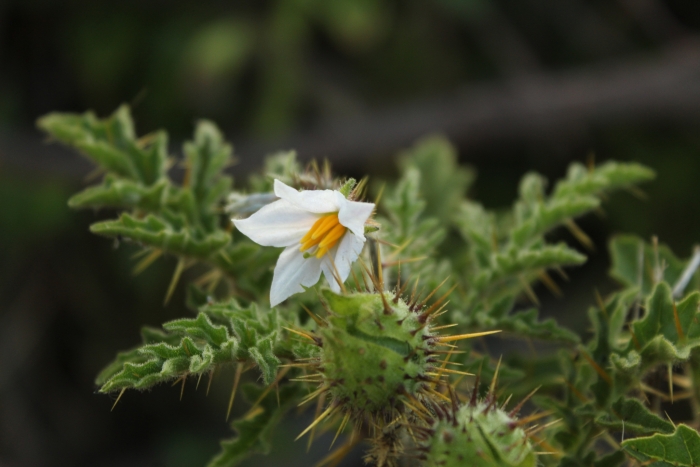Sticky Nightshade
(Solanum sisymbriifolium)
Sticky Nightshade (Solanum sisymbriifolium)
/
/

Andrés Ramírez-Barrera
CC BY 4.0
























Estimated Native Range
Summary
Sticky nightshade is valued for its ability to act as a trap crop, particularly in potato fields, where it lures nematodes away from the main crop. It is also grown for its edible fruits and as an ornamental plant due to its attractive flowers and fruits. The plant prefers full sun and well-drained soils, and it is relatively drought-tolerant once established. While it can be a useful plant in cultivation, Solanum sisymbriifolium is known to be potentially invasive in some regions outside its native range, so it is important to check local regulations before planting. It can also have aggressive roots and spiny stems that may cause issues if not managed properly.CC BY-SA 4.0
Plant Description
- Plant Type: Herb, Shrub
- Height: 3.25-5 feet
- Width: 1.75-3.25 feet
- Growth Rate: Moderate
- Flower Color: White
- Flowering Season: Summer
- Leaf Retention:
Growth Requirements
- Sun: Full Sun
- Water: Medium
- Drainage: Medium, Fast
Common Uses
Border Plant, Edible*Disclaimer: Easyscape's listed plant edibility is for informational use. Always verify the safety and proper identification of any plant before consumption.
Natural Habitat
Native to warm temperate to subtropical regions of South America, often found in disturbed areas and field edges
Other Names
Common Names: Sticky Nightshade, Litchi Tomato, Alco-Chileo, Arrabenta Cavalo, Dense-Thorn Bitter Apple, Fire and Ice Plant, Morelle de Balbis, Doringtamatie
Scientific Names: , Solanum sisymbriifolium, Solanum balbisii, Solanum balbisii subsp. bipinnata, Solanum balbisii subsp. oligospermum, Solanum balbisii subsp. purpureum, Solanum balbisii var. bipinnata, Solanum balbisii var. oligospermum, Solanum balbisii var. purpureum, Solanum bipinnatifidum
GBIF Accepted Name: